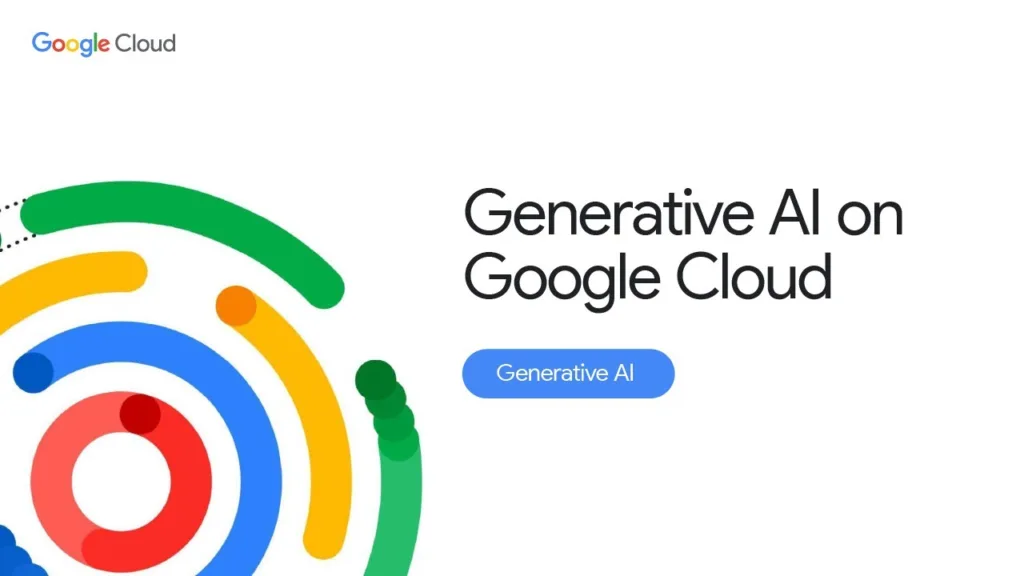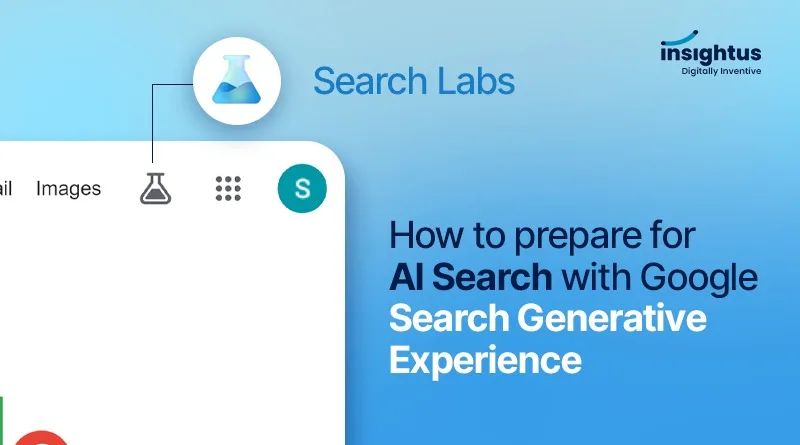Google Search Generative Experience (SGE) stands at the forefront of online transformation. This innovative tool utilises generative AI to provide a more insightful and comprehensive search experience, going beyond traditional keyword-based matching.
For Search Intent (SI) specialists, SGE opens up new possibilities for optimising content and understanding user needs. By anticipating how users interact with SGE’s AI-powered features, you can ensure your content ranks highly and effectively addresses user intent.
This guide will equip you with the knowledge and strategies needed to leverage SGE for successful SI search preparation. We’ll delve into the core functionalities of SGE, explore its impact on user searches, and provide practical tips on optimising your content for this dynamic search environment.
Understanding Google Search Generative Experience
A. Introducing Google’s Generative Search Landscape:
Google Search Generative Experience (SGE) represents a paradigm shift in how we interact with information online. Stepping beyond the realm of simple keyword matching, SGE leverages the power of generative AI to understand the intent behind your search and deliver a more comprehensive, personalised, and dynamic search experience.
1. Evolution of Search:
Traditionally, search engines relied on algorithms to match your keywords with relevant websites. SGE, however, takes a more nuanced approach. It analyses your query, interprets your underlying intent, and then combs through its vast repository of knowledge to deliver:
AI-powered overviews: These summaries condense the most pertinent information from various sources, offering a holistic understanding of the topic.
Multiple perspectives: SGE recognizes that information often has multiple facets. It presents diverse viewpoints and sources, enabling you to make informed decisions.
Deeper exploration: The experience doesn’t stop at the initial results page. SGE suggests related topics, questions, and resources, encouraging you to delve deeper and expand your knowledge.
2. Redefining Relevance with SI:
Search Intent (SI) lies at the heart of SGE’s success. It goes beyond the literal meaning of your keywords to understand what you truly want to know.
SI encompasses:
The purpose of your search: Are you seeking knowledge, completing a task, making a purchase, or experiencing something new?
The context of your query: What prompted your search? What kind of information are you most likely to find valuable?
Your background knowledge and preferences: What do you already know about the topic? How do your interests and biases influence your search?
By understanding SI, SGE can tailor its responses to your specific needs, delivering results that are not only relevant to your keywords but also resonate with your individual goals and motivations.
B. Summary:
The Google Search Generative Experience represents a major advancement in information retrieval. By leveraging AI and understanding search intent, it transforms information search from a passive act of keyword matching into an active, dynamic exploration of knowledge. With this deeper understanding of SGE and its reliance on SI, you’re now equipped to prepare for successful searches in this evolving landscape
Key Components of SI Search Preparation

Image Credit: google.com
A. Keyword Research:
Techniques for Identifying Relevant Keywords:
Seed keyword brainstorming: Start with broad, relevant topics and generate related keywords.
Competitor analysis: Analyse keywords used by successful competitors in your field.
Keyword research tools: Utilise tools like Google Keyword Planner, Ahrefs, or SEMrush for keyword suggestions and search volume data.
Long-tail keyword exploration: Target specific, niche keywords with lower competition but higher conversion potential.
User query analysis: Analyse real user queries using platforms like Google Search Console or AnswerThePublic to understand user intent and search behaviour.
Importance of Understanding User Intent Behind Keywords:
Identifying search types: Differentiate between informational, navigational, transactional, or local intent behind keywords.
Tailoring content to user expectations: Craft content that aligns with the specific information needs or goals users have when searching for a particular keyword.
Optimising for relevance and value: Ensure your content accurately and comprehensively addresses the user’s query, providing the most relevant and valuable information possible.
B. Content Optimization:
Crafting Content Tailored to User Intent:
Headings and subheadings: Utilise clear and concise headings that reflect the user’s search query and subheadings to structure your content logically.
Content format: Adapt your content format (e.g., listicles, FAQs, tutorials) to best suit the user’s intent and provide an engaging reading experience.
Information hierarchy: Prioritise the most important information at the beginning of your content and gradually provide additional details.
Clarity and conciseness: Use clear and concise language, avoiding jargon or technical terms unless necessary.
Incorporating Semantic SEO Strategies:
Topic clusters and entity relationships: Build topic clusters around your main keywords, linking related content naturally and demonstrating expertise in your field.
Latent semantic indexing (LSI): Use relevant synonyms and semantically related keywords throughout your content to improve search engine understanding of your topic.
Structured data markup: Implement schema markup to provide rich snippets and enhance search result visibility.
C. User Behavior Analysis:
Utilising Data on User Interactions with Search Results:
Click-through rate (CTR): Analyse which keywords and content snippets have the highest CTR to understand user preferences and optimise accordingly.
Dwell time: Track how long users stay on your page after clicking through from a search result, indicating content relevance and engagement.
Bounce rate: Monitor bounce rates to identify content that fails to meet user expectations and needs improvement.
User feedback: Actively seek user feedback through surveys, comments, or social media interactions to gain insights into their search experience and content preferences.
Adapting Content Based on User Behaviour Insights:
A/B testing: Test different content variations based on user behavior data to identify the most effective approach.
Continuous improvement: Regularly analyse user data and adapt your content strategy based on the latest insights to maintain relevance and effectiveness.
Leveraging Generative Experience Features
The Google Search Generative Experience brings powerful new capabilities to the search landscape, empowering you to prepare for SI Search like never before. Let’s delve into two key features and explore how they can elevate your search efforts:
Synthesising Information:

Image Credit: google.com
Generative language models (LLMs) make this a reality! Google Search now leverages LLMs to:
Automatically summarize complex topics: No more wading through dense text walls. LLMs can condense key points and insights into concise, easy-to-digest summaries.
Generate different content formats:* Need a bulleted list, a table, or even a poem summarizing your search? LLMs can do it all, adapting to your preferred way of consuming information.
Answer open-ended questions: Stuck on a vague query? LLMs can analyze the context and provide comprehensive, well-rounded answers, going beyond simple keyword matches.
Strategies for User-Friendly Information Presentation:
Utilize prompts effectively: Guide the LLM by providing clear and concise prompts that accurately reflect your information needs.
Specify desired content format: Tell the LLM whether you want a summary, a report, or a specific content type to get the most relevant output.
Break down complex queries: If your search involves multiple aspects, consider dividing it into smaller, more focused queries for the LLM to handle effectively.
B. Query Expansion Techniques:
Think of query expansion as turbocharging your search. By incorporating related keywords strategically, you can unlock a wider range of relevant results and discover unexpected connections. Here are some tactics:
Synonym exploration: Use thesauruses or LLM suggestions to find synonyms for your primary keywords, casting a wider search net.
Related searches: Leverage Google’s “related searches” feature to uncover additional keywords and concepts relevant to your initial query.
Lateral thinking: Step outside the box! Consider alternative approaches to your topic and use keywords related to those angles to expand your search.
Effective Keyword Incorporation:
Use quotes for exact matches: Ensure the LLM focuses on specific terms by enclosing them in quotation marks.
Employ Boolean operators: Leverage AND, OR, and NOT to refine your search and filter out irrelevant results.
Combine broad and specific keywords: Strike a balance! Include general terms to capture the essence of your topic while incorporating specific keywords for targeted results.
By mastering these generative experience features, you can transform your SI Search preparation from a chore to a strategic exploration. Remember, the key lies in understanding the capabilities of LLMs and employing them effectively to navigate the ever-evolving search landscape with confidence and success.
Best Practices for SI Search Preparation

Image Credit: google.com
A. Staying Updated with Algorithm Changes
To thrive in this dynamic environment, successful SI search preparation requires adapting to these changes with agility and knowledge.
Tips for adapting to algorithmic updates:
Stay informed: Regularly follow credible sources like Google Search Central, industry blogs, and news publications to stay abreast of upcoming algorithm changes and their potential impact.
Analyze your data: Monitor your website traffic and search performance metrics to identify any sudden drops or shifts that might coincide with algorithm updates.
Focus on user intent: Understand the underlying search intent behind user queries and ensure your content caters to those needs effectively, regardless of specific keywords.
Embrace experimentation: Continuously test and refine your SEO strategies to see what resonates with the ever-changing algorithms. Don’t be afraid to pivot and adjust your approach based on data and results.
Build relationships: Connect with other SEO professionals and communities to share insights, exchange best practices, and stay informed about industry trends.
B. User-Centric Content Creation
While algorithms play a crucial role in search ranking, ultimately, it’s the users who drive search queries and engagement. Therefore, successful SI search preparation hinges on creating content that prioritizes user satisfaction and value over mere search engine optimization.
Emphasizing user-centric content creation:
Understand your audience: Conduct thorough audience research to identify their needs, interests, and preferred content formats. Tailor your content accordingly to provide genuine value and address their specific pain points.
Focus on quality over quantity: Prioritise creating high-quality, informative, and engaging content that resonates with your audience. Strive for depth and clarity over shallow, keyword-stuffed content.
Optimize for readability: Ensure your content is easy to read and understand, with clear formatting, concise language, and relevant visuals.
Prioritize mobile-friendliness: With the majority of searches now happening on mobile devices, optimize your website and content for seamless mobile experiences.
Build trust and authority: Establish yourself as a credible source of information in your niche by providing accurate, relevant, and unbiased content.
Tools and Resources for SI Search Preparation

Image Credit: google.com
Equipping yourself with the right tools and resources is crucial for successful SI search preparation. Here’s a breakdown of helpful options for keyword research, content optimization, and user behaviour analysis, along with resources to stay informed about SEO and search trends:
A. Keyword Research:
Google Keyword Planner: A free tool from Google Ads that provides search volume estimates, keyword suggestions, and competition insights.
Semrush: Offers comprehensive keyword research, competitor analysis, and backlink tracking functionalities.
Ahrefs: Another powerful tool for keyword research, backlink analysis, and content gap identification.
Moz Keyword Explorer: Provides keyword suggestions, search volume data, and competition analysis, along with SEO difficulty scores.
Ubersuggest: A freemium tool offering keyword suggestions, related searches, and competition insights.
B. Content Optimization:
Yoast SEO: A popular WordPress plugin that analyses your content for SEO readability, keyword usage, and social media optimization.
SEMrush Content Audit: Analyses your website content for SEO performance, identifies improvement opportunities, and tracks progress.
Copyscape: Checks for plagiarism and duplicate content across the web.
Grammarly: Ensures your content is grammatically correct and error-free.
Hemingway Editor: Helps improve your writing style by highlighting complex sentences and suggesting simpler alternatives.
C. User Behavior Analysis:
Google Analytics: Provides insights into website traffic, user behaviour, and conversion rates.
Hotjar: Records user sessions on your website, allowing you to visualise how users interact with your content.
Crazy Egg: Offers heatmaps and scroll maps to visualise user engagement on your website.
Clicktale: Provides comprehensive user recordings, heatmaps, and attention maps to understand user behaviour deeply.
Lucky Orange: Offers live chat, session recordings, and form analytics to understand user needs and improve website conversions.
D.Staying Informed about SEO and Search Trends:
Moz Blog: Provides insights and updates on SEO best practices, algorithm changes, and industry trends.
Search Engine Land: Covers the latest news and developments in the world of search marketing.
SEMrush Blog: Offers SEO tips, case studies, and data-driven insights from industry experts.
Ahrefs Blog: Shares actionable SEO advice, research findings, and technical guides.
Google Search Central: Official resource from Google with updates on search algorithm changes, webmaster guidelines, and best practices.
Future Trends in SI Search
Rise of hybrid search models: Combining traditional SI techniques with generative AI algorithms for even more personalised and relevant search experiences.
Focus on user intent understanding: Moving beyond keyword matching to truly grasp the user’s underlying needs and goals, delivering results that go beyond their initial query.
Integration with voice search and conversational interfaces: Optimizing SI for the growing popularity of voice-based search and chatbots, providing seamless and natural user interactions.
Evolving role of SEO: Adapting SEO strategies to the changing landscape of generative search, focusing on content quality, user relevance, and AI-friendliness.
Preparing for the future of search intent optimization requires staying abreast of these emerging trends and proactively adapting your SI strategies. By embracing the power of Google Search Generative Experience and focusing on user-centric experiences, you can ensure your website or platform thrives in the evolving search landscape.
Successful SI search preparation isn’t just about finding the right answer; it’s about empowering yourself to explore information in a meaningful and informed way.
See AI summaries & ask follow-up questions on some searches.
Explore “Page Insights” for summaries on mobile web pages.
SGE is evolving, so keep exploring and giving feedback!
What is the SGE feature in Google?
Google SGE, or Search Generative Experience, is a still-developing feature that uses AI to provide richer search results. It can offer:
AI-powered summaries: Concise overviews of search topics with key points and links to learn more.
**Conversational ** Ask related questions within the summary to explore the topic further.
Web page insights: On mobile, get AI summaries and related content specific to the webpage you’re on.
It’s evolving, so not all searches have these features yet, but you can try it out by activating SGE in Google Labs (desktop or Android app).
Generative AI on Vertex AI: This is the overall platform for accessing and working with Google’s large generative AI models like Gemini and others.
Vertex AI Studio: This was previously called Generative AI Studio and acts as the user interface for Vertex AI, allowing you to test, customize, and embed foundation models in your applications.
Foundation models: These are the large, pre-trained models like Gemini that can be used for various tasks like text generation, code completion, and image manipulation.
Specific names: Some individual models, like Gemini, have their own names.
Essentially, you can use “Google generative AI” as a general term, “Vertex AI” for the platform, and “Vertex AI Studio” for the user interface. Then, be more specific depending on the model you’re talking about.
I hope this clarifies the naming landscape for Google’s generative AI offerings!


